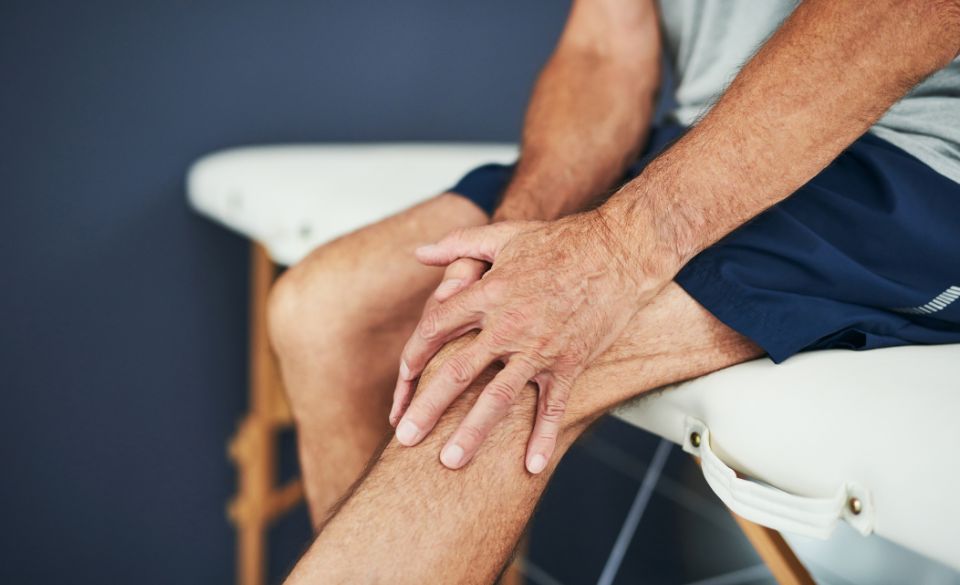
Does Running Make You Stiff
Does running make you stiff? It’s a question many runners ask, and the answer is not necessarily straightforward. While running does involve stretching and strengthening your muscles, it is usually only stiffening at certain points in your routine: running uphill, pushing off the ground, or taking a harder turn at a corner.
In general, running does not make you stiff until you’re pushing yourself beyond your comfort zone. Regular running should involve stretching and dynamic warmups, which can increase your flexibility and help prevent stiffness. As your body warms up while you’re running, your muscles naturally become more flexible and supple, allowing you to move more easily.
Injuries can also lead to stiffness and tightness in muscles and joints. If your muscles are overused or strained, they can become stiff and sore. Rest or a well-timed massage can help alleviate the tension. Similarly, poor running posture can contribute to stiffness and inflammation, leading to joint stiffness and aching muscles. It’s important to practice proper form when running to minimize stress on your body.
Finally, there’s the issue of footwear. Depending on the type of foot strike you have, certain running shoes may not provide sufficient cushioning and support for your foot. When your foot strikes the ground without proper cushioning, your body may naturally tense up in an effort to protect itself. This can lead to stiffness and inflammation.
In summary, running does not always lead to stiffness and tightness, but it can if you’re not careful. Be sure to warm up properly and practice good form while running, and choose shoes that provide adequate cushioning and support. It’s also important to rest after hard workouts and seek treatment if you suffer a running-related injury. With the right precautions and attention to your body, running can be an enjoyable and healthy activity.
How To Recover From Stiff Legs
When your legs are feeling stiff, it’s not only uncomfortable to even think about stretching, but it can also be a sign of a bigger underlying problem. Stiff legs can be the result of an injury, a medical condition, or just everyday wear-and-tear. In order to relieve the stiffness and get back to an active lifestyle, it’s important to properly recover your legs. Here are some tips to help you recover from stiff legs quickly and safely.
1. Take it Easy
The first step to recovering from stiff legs is to take it easy and give your legs a break. Avoid intense activities and focus on rest, reducing the amount of time you spend on your feet. This will help to give your legs time to heal and reduce the level of stiffness.
2. Get Moving
Although it seems counterintuitive to move after experiencing stiffness in your legs, gentle stretches and low impact exercises can be the key to healing. Exercises like yoga or swimming may help to loosen stiff muscles, allowing for better blood circulation, greater flexibility, and improved mobility.
3. Utilize Heat and Cold
The application of heat and cold to a stiff area can be helpful in reducing pain and discomfort. Applying heat helps to relax the muscles while cold therapy can reduce inflammation and swelling, two common causes of stiffness. Try alternating between the two to provide comfort and relief.
4. Massage
Massage can be beneficial in the overall recovery of stiff legs. Not only will it help to alleviate pain and promote relaxation, but it can also improve blood circulation, stimulate muscle repair, and decrease swelling.
5. Improve Flexibility
Improving flexibility not only reduces stiffness levels, but can also help to reduce the risk of future injury. Incorporating stretching into your daily routine is a great way to increase your range of motion, flexibility, and improve overall functionality.
6. Get a Professional Assessment
If you are unable to reduce the stiffness in your legs or you experience pain or discomfort, it may be beneficial to seek the advice of a medical professional. A doctor can provide a diagnosis, determine an effective treatment plan, and understand underlying conditions.
Stiff legs can be very uncomfortable and decrease mobility, but with a few simple steps it is possible to reduce the pain and stiffness and improve your full range of motion. Start by gently stretching or exercising, try using heat and cold, and don’t be afraid to reach out for professional help if the pain lasts too long. With a few small steps, you will be able to get back on the move in no time.
Does Running Technique Cause Stiffness In The Legs
Do you ever feel soreness or stiffness in your legs after a running session? You may want to think about your running technique if that’s the case. While running may provide numerous health benefits, it can also cause strain and muscle damage if done incorrectly. Many runners experience stiffness in the legs due to poor running technique, which can lead to pain and fatigue.
Incorrect running form is the primary cause of stiffness in the legs. Poor technique can increase the risk of injury and muscle soreness, as well as reduce the efficiency of a runner’s performance. Common causes of improper technique include overstriding, heel striking and lack of coordination.
Overstriding occurs when someone runs with too much knee flexion during the stride. This can cause a runner to land with their toes too far ahead of their body, resulting in excessive braking forces and increased impact on the legs. Heel striking occurs when a runner lands on their heel instead of their mid-foot. This can lead to a lack of shock absorption which can power the legs and stretch the muscles too much. Poor coordination between the feet and body can also result in weak joints and inefficient running cadence, causing stiffness.
Fortunately, most of these issues can be addressed through strength training, stretching and proper running form. It’s important to focus on technique while running, such as running with the core engaged, maintaining a mid-foot strike, keeping the arms close to the body and avoiding overstriding. Additionally, a runner should perform regular stretching and strength training to ensure proper functioning of their legs.
By incorporating these elements into their running regimens, runners can reduce their risk of stiffness in the legs. Focusing on proper running form is essential for any runner, and can help prevent injuries as well as maintain proper performance.


